-
 Bitcoin
Bitcoin $108,489.6704
1.13% -
 Ethereum
Ethereum $2,502.0528
2.92% -
 Tether USDt
Tether USDt $1.0002
0.00% -
 XRP
XRP $2.1941
0.51% -
 BNB
BNB $655.3375
1.00% -
 Solana
Solana $151.5977
1.27% -
 USDC
USDC $0.9999
0.00% -
 TRON
TRON $0.2768
0.32% -
 Dogecoin
Dogecoin $0.1676
2.86% -
 Cardano
Cardano $0.5675
0.98% -
 Hyperliquid
Hyperliquid $40.6109
7.48% -
 Bitcoin Cash
Bitcoin Cash $500.7746
2.09% -
 Sui
Sui $2.8328
2.03% -
 Chainlink
Chainlink $13.4452
1.26% -
 UNUS SED LEO
UNUS SED LEO $9.1623
0.39% -
 Avalanche
Avalanche $18.2267
2.24% -
 Stellar
Stellar $0.2382
0.00% -
 Toncoin
Toncoin $2.8885
1.68% -
 Shiba Inu
Shiba Inu $0.0...01159
0.91% -
 Litecoin
Litecoin $87.1827
0.88% -
 Hedera
Hedera $0.1511
2.90% -
 Monero
Monero $315.4992
-0.59% -
 Polkadot
Polkadot $3.4663
2.34% -
 Bitget Token
Bitget Token $4.6118
-0.65% -
 Dai
Dai $1.0000
-0.01% -
 Ethena USDe
Ethena USDe $1.0003
0.02% -
 Uniswap
Uniswap $7.2989
4.69% -
 Pepe
Pepe $0.0...01003
5.73% -
 Aave
Aave $275.5616
7.15% -
 Pi
Pi $0.5181
-2.49%
How does decentralized identity work? How does it solve privacy and data ownership issues?
Decentralized identity uses blockchain to give users control over their data, enhancing privacy and ownership in the cryptocurrency ecosystem.
May 07, 2025 at 01:35 am
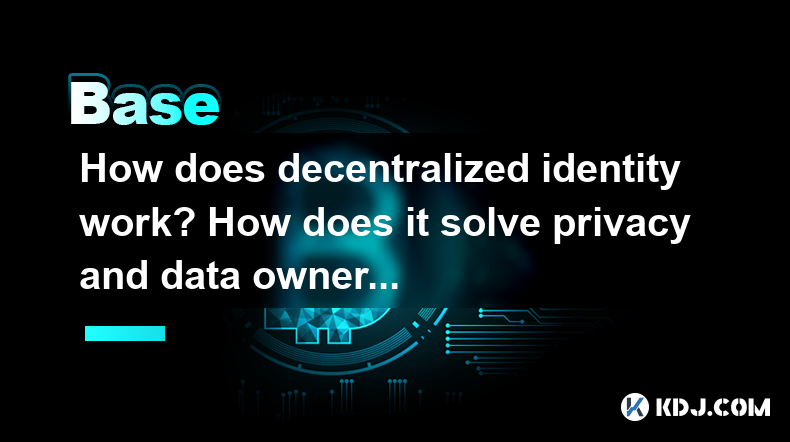
Decentralized identity, often abbreviated as DID, is a revolutionary approach to identity management that leverages blockchain technology to offer enhanced privacy and data ownership to users. Unlike traditional centralized systems where personal data is controlled by a single entity, decentralized identity empowers individuals to own and control their own data. In this article, we will explore how decentralized identity works and how it addresses privacy and data ownership issues within the cryptocurrency ecosystem.
The Basics of Decentralized Identity
Decentralized identity operates on the principle of self-sovereign identity, where individuals have complete control over their personal data. In a DID system, identities are not stored on a centralized server but are instead managed through a distributed ledger, typically a blockchain. This ensures that no single entity has control over the entire network, thereby enhancing security and privacy.
The core component of a decentralized identity system is the DID document. This document contains public keys and service endpoints necessary to interact with the identity. Each DID document is associated with a unique DID identifier, which is used to reference the identity on the blockchain. Users can generate their DID identifiers using various DID methods, such as those based on Ethereum, Bitcoin, or other blockchain networks.
How Decentralized Identity Works
To understand how decentralized identity works, let's break down the process into key steps:
- Creation of a DID: A user generates a DID using a DID method supported by their chosen blockchain network. This involves creating a pair of cryptographic keys: a public key that is shared and a private key that remains confidential.
- Registration of the DID: The user's DID is registered on the blockchain, making it publicly verifiable. The DID document, which includes the public key and other necessary information, is also stored on the blockchain.
- Verification and Authentication: When a user wants to prove their identity, they use their private key to sign a message or transaction. The recipient can verify the signature using the public key from the DID document, ensuring that the user is indeed the owner of the DID.
- Data Management: Users can store and manage their personal data in a decentralized storage solution, such as InterPlanetary File System (IPFS). This data can be selectively shared with third parties without revealing unnecessary information.
Solving Privacy Issues with Decentralized Identity
One of the primary advantages of decentralized identity is its ability to enhance privacy. In traditional systems, personal data is often collected, stored, and shared without the user's explicit consent. Decentralized identity addresses this issue by allowing users to control who has access to their data and for what purpose.
- Selective Disclosure: With decentralized identity, users can choose which pieces of their data to share. For instance, if a user needs to prove their age to access a cryptocurrency trading platform, they can share only their birthdate without revealing their full identity.
- Zero-Knowledge Proofs: This cryptographic technique allows users to prove certain statements about their data without revealing the data itself. For example, a user can prove they are over 18 years old without disclosing their exact age.
- Immutable Records: Since DIDs are stored on a blockchain, they are immutable and tamper-proof. This ensures that once a user's identity is established, it cannot be altered without their consent, reducing the risk of identity theft.
Addressing Data Ownership Issues
Decentralized identity also tackles the issue of data ownership by giving users full control over their personal data. In centralized systems, users often have to agree to lengthy terms of service that grant companies broad rights to use their data. Decentralized identity changes this dynamic by ensuring that users retain ownership and control.
- Portability: Users can move their identity and associated data between different services and platforms without losing control. This is particularly important in the cryptocurrency world, where users may need to interact with various decentralized applications (dApps).
- Revocability: Users can revoke access to their data at any time. If a user no longer wishes to share their data with a particular service, they can simply update their DID document to remove the relevant permissions.
- Auditability: Blockchain technology allows users to track who has accessed their data and when. This transparency helps users ensure that their data is being used in accordance with their wishes.
Practical Implementation of Decentralized Identity in Cryptocurrency
In the cryptocurrency space, decentralized identity has numerous practical applications. For instance, decentralized exchanges (DEXs) can use DID to verify user identities without compromising privacy. Similarly, non-fungible tokens (NFTs) can be tied to a user's DID, ensuring that ownership records are secure and verifiable.
- Identity Verification on DEXs: A user wishing to trade on a DEX can use their DID to prove their identity. The DEX can verify the user's DID without collecting unnecessary personal information, thereby maintaining user privacy.
- NFT Ownership: When minting an NFT, the creator can link it to their DID. This ensures that the ownership record is immutable and tamper-proof, reducing the risk of fraud and disputes.
- Decentralized Lending and Borrowing: Platforms offering decentralized lending and borrowing services can use DID to verify the creditworthiness of borrowers without accessing their entire financial history.
Technical Aspects of Decentralized Identity
Understanding the technical underpinnings of decentralized identity is crucial for appreciating its full potential. The use of cryptographic algorithms ensures the security and integrity of the system. Public-key cryptography is used to create and verify digital signatures, while hash functions are employed to generate unique identifiers.
- Public-Key Cryptography: This involves generating a pair of keys: a public key for encryption and a private key for decryption. The public key is shared in the DID document, while the private key remains with the user, ensuring secure communication and authentication.
- Hash Functions: These are used to create the DID identifier from the user's public key. A hash function takes the public key as input and produces a fixed-size string of bytes, which serves as the unique DID identifier.
- Decentralized Storage: Solutions like IPFS are used to store the DID documents and associated data. IPFS is a peer-to-peer network that allows users to store and share data in a decentralized manner, enhancing privacy and security.
Frequently Asked Questions
Q: Can decentralized identity be used with existing blockchain networks like Ethereum or Bitcoin?
A: Yes, decentralized identity can be integrated with existing blockchain networks. For instance, Ethereum supports various DID methods, such as Ethereum-based DIDs, which use the Ethereum blockchain to store and manage DID documents. Similarly, Bitcoin can be used to create DIDs through the use of its blockchain.
Q: How does decentralized identity handle the loss of a private key?
A: Losing a private key can be a significant issue in decentralized identity systems. To mitigate this risk, users can use key recovery mechanisms, such as social recovery, where a group of trusted individuals can help recover the key. Additionally, some systems allow users to generate multiple private keys and store them in secure hardware wallets.
Q: Are there any regulatory challenges associated with decentralized identity in the cryptocurrency space?
A: Yes, regulatory challenges exist, particularly around Know Your Customer (KYC) and Anti-Money Laundering (AML) requirements. While decentralized identity can enhance privacy, it must also comply with existing regulations. Some solutions involve using decentralized identity to meet these requirements while still maintaining user control over their data.
Q: How can decentralized identity improve security in cryptocurrency transactions?
A: Decentralized identity can enhance security in cryptocurrency transactions by ensuring that only verified identities can participate in transactions. This reduces the risk of fraud and unauthorized access. Additionally, the use of cryptographic signatures ensures that transactions are secure and tamper-proof, providing an additional layer of security.
Disclaimer:info@kdj.com
The information provided is not trading advice. kdj.com does not assume any responsibility for any investments made based on the information provided in this article. Cryptocurrencies are highly volatile and it is highly recommended that you invest with caution after thorough research!
If you believe that the content used on this website infringes your copyright, please contact us immediately (info@kdj.com) and we will delete it promptly.
- Bitcoin's Bumpy Ride: Profit-Taking Slows Momentum, What's Next?
- 2025-06-30 20:30:11
- Bitcoin's Price Stall: Decoding the ETF Inflows Mystery
- 2025-06-30 20:30:11
- Ripple XRP, Bitcoin, and Solaris Presale: What's the Buzz?
- 2025-06-30 18:50:11
- SpaceX, Mirror Tokens, and Investors: A Wild Ride to the Future?
- 2025-06-30 19:10:22
- Arbitrum (ARB) and Robinhood: Partnership Rumors Fuel Price Surge to $0.4289?
- 2025-06-30 19:10:22
- Jasmy Coin, Bitcoin, and the Rise of Solaris Presale: What's the Buzz?
- 2025-06-30 18:30:12
Related knowledge
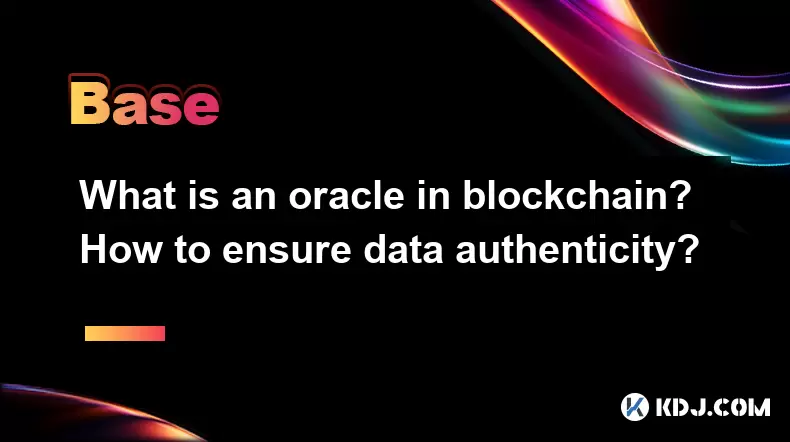
What is an oracle in blockchain? How to ensure data authenticity?
Jun 19,2025 at 08:49pm
Understanding the Role of an Oracle in BlockchainIn the context of blockchain technology, an oracle serves as a bridge between the blockchain and external data sources. While blockchains are inherently secure and decentralized, they cannot access real-world information on their own. Oracles enable smart contracts to interact with off-chain data such as ...
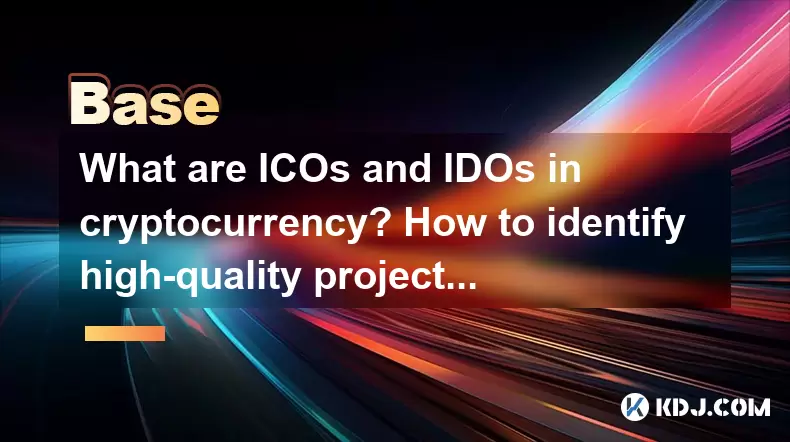
What are ICOs and IDOs in cryptocurrency? How to identify high-quality projects?
Jun 22,2025 at 11:49am
Understanding ICOs in CryptocurrencyInitial Coin Offerings (ICOs) are fundraising mechanisms used by cryptocurrency startups to raise capital for their projects. In an ICO, a company creates and sells its own tokens to investors in exchange for established cryptocurrencies like Bitcoin or Ethereum. The process typically involves the release of a whitepa...
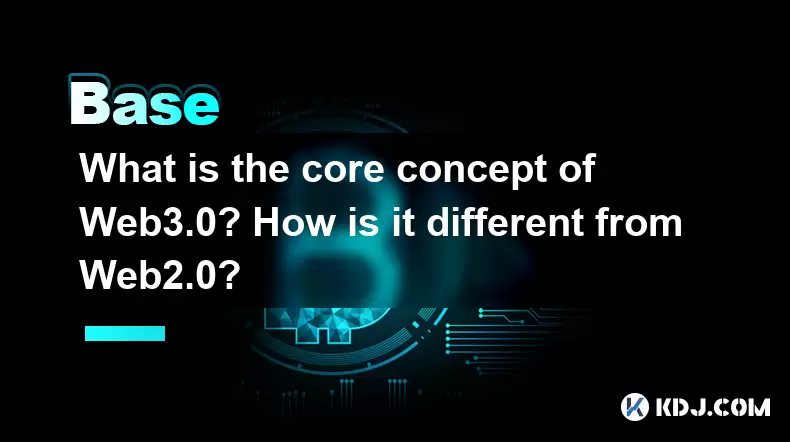
What is the core concept of Web3.0? How is it different from Web2.0?
Jun 21,2025 at 05:56pm
Decentralization as the Foundation of Web3.0The core concept of Web3.0 revolves around decentralization, which fundamentally challenges the centralized architecture of Web2.0. In Web3.0, control and ownership are distributed across a network rather than being held by a central authority or corporation. This is achieved primarily through blockchain techn...
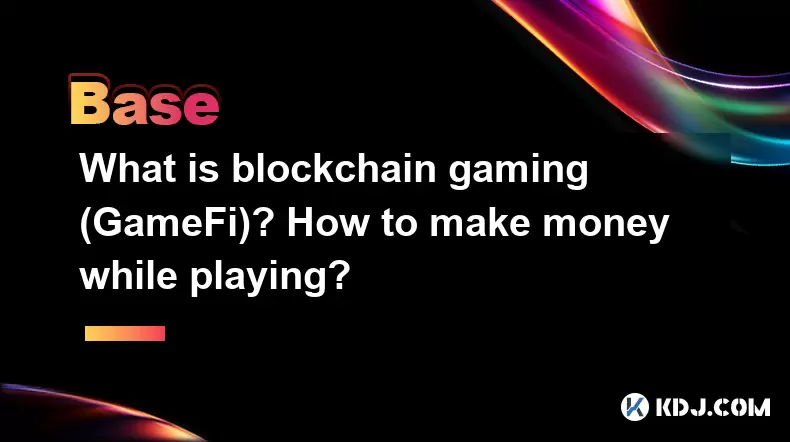
What is blockchain gaming (GameFi)? How to make money while playing?
Jun 20,2025 at 07:56am
Understanding Blockchain Gaming (GameFi)Blockchain gaming, often referred to as GameFi, is a fusion of blockchain technology and video games. It enables players to own in-game assets through non-fungible tokens (NFTs) and earn rewards via cryptocurrencies or token-based systems. Unlike traditional games where items are controlled by centralized develope...
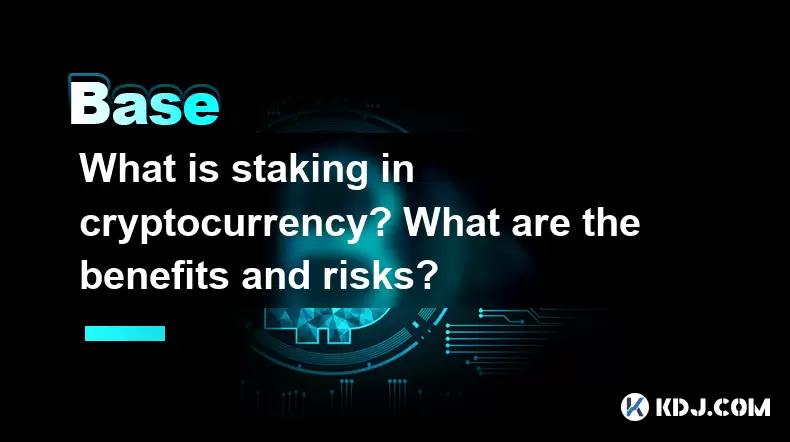
What is staking in cryptocurrency? What are the benefits and risks?
Jun 22,2025 at 10:01am
Understanding the Concept of Staking in CryptocurrencyStaking in cryptocurrency refers to the process of actively participating in transaction validation on a blockchain network that uses a Proof-of-Stake (PoS) consensus mechanism. Instead of miners competing to solve complex mathematical puzzles as in Proof-of-Work systems like Bitcoin, PoS blockchains...
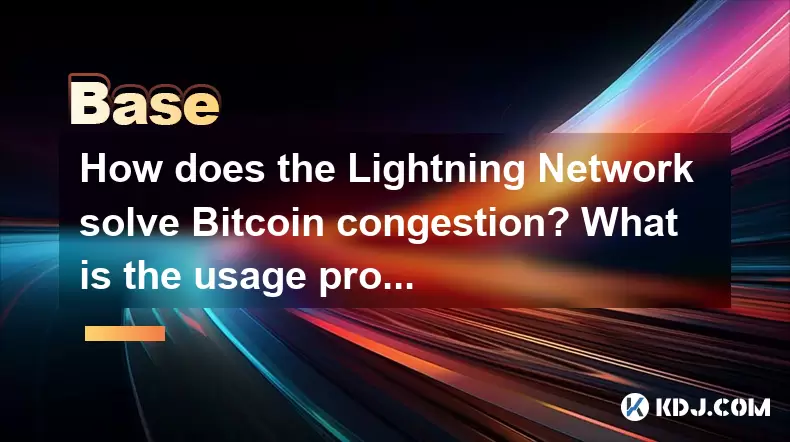
How does the Lightning Network solve Bitcoin congestion? What is the usage process?
Jun 23,2025 at 06:21pm
Understanding Bitcoin Network CongestionBitcoin, as a decentralized digital currency, operates on a blockchain that records every transaction in a public ledger. Each block has a limited size, typically 1 megabyte, which allows for only a certain number of transactions per second (TPS). When the number of transactions increases, the network becomes cong...

What is an oracle in blockchain? How to ensure data authenticity?
Jun 19,2025 at 08:49pm
Understanding the Role of an Oracle in BlockchainIn the context of blockchain technology, an oracle serves as a bridge between the blockchain and external data sources. While blockchains are inherently secure and decentralized, they cannot access real-world information on their own. Oracles enable smart contracts to interact with off-chain data such as ...

What are ICOs and IDOs in cryptocurrency? How to identify high-quality projects?
Jun 22,2025 at 11:49am
Understanding ICOs in CryptocurrencyInitial Coin Offerings (ICOs) are fundraising mechanisms used by cryptocurrency startups to raise capital for their projects. In an ICO, a company creates and sells its own tokens to investors in exchange for established cryptocurrencies like Bitcoin or Ethereum. The process typically involves the release of a whitepa...

What is the core concept of Web3.0? How is it different from Web2.0?
Jun 21,2025 at 05:56pm
Decentralization as the Foundation of Web3.0The core concept of Web3.0 revolves around decentralization, which fundamentally challenges the centralized architecture of Web2.0. In Web3.0, control and ownership are distributed across a network rather than being held by a central authority or corporation. This is achieved primarily through blockchain techn...

What is blockchain gaming (GameFi)? How to make money while playing?
Jun 20,2025 at 07:56am
Understanding Blockchain Gaming (GameFi)Blockchain gaming, often referred to as GameFi, is a fusion of blockchain technology and video games. It enables players to own in-game assets through non-fungible tokens (NFTs) and earn rewards via cryptocurrencies or token-based systems. Unlike traditional games where items are controlled by centralized develope...

What is staking in cryptocurrency? What are the benefits and risks?
Jun 22,2025 at 10:01am
Understanding the Concept of Staking in CryptocurrencyStaking in cryptocurrency refers to the process of actively participating in transaction validation on a blockchain network that uses a Proof-of-Stake (PoS) consensus mechanism. Instead of miners competing to solve complex mathematical puzzles as in Proof-of-Work systems like Bitcoin, PoS blockchains...

How does the Lightning Network solve Bitcoin congestion? What is the usage process?
Jun 23,2025 at 06:21pm
Understanding Bitcoin Network CongestionBitcoin, as a decentralized digital currency, operates on a blockchain that records every transaction in a public ledger. Each block has a limited size, typically 1 megabyte, which allows for only a certain number of transactions per second (TPS). When the number of transactions increases, the network becomes cong...
See all articles

























































































